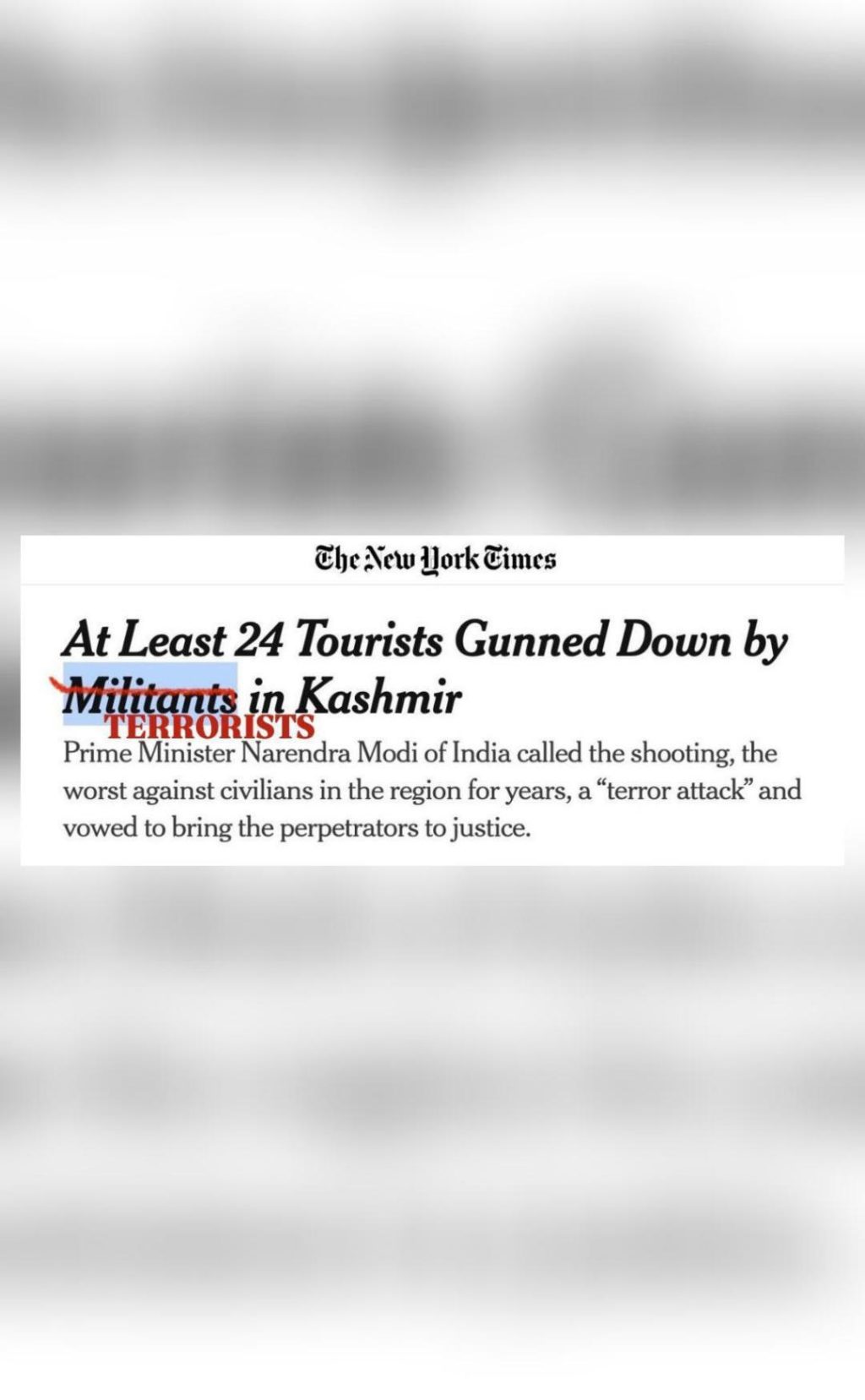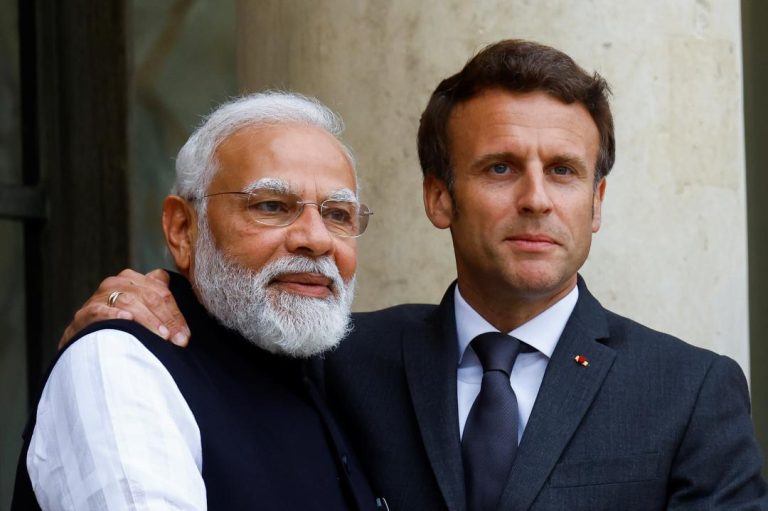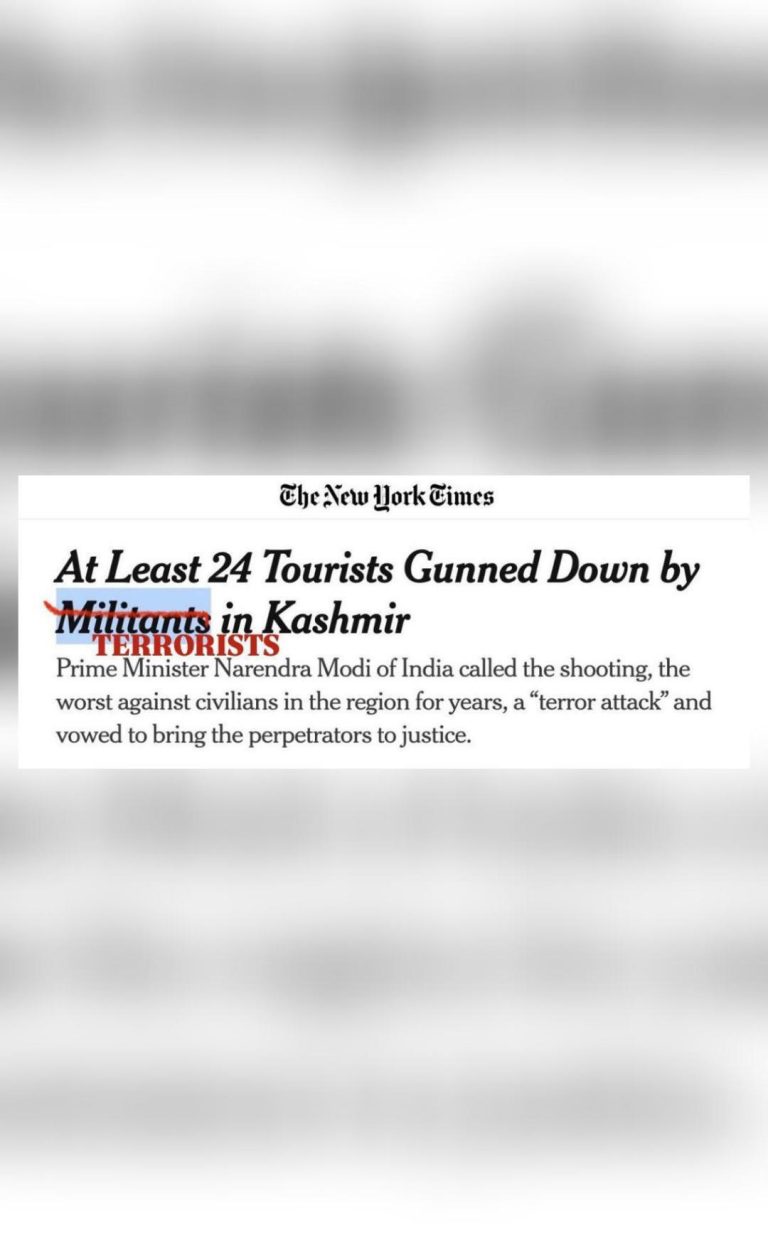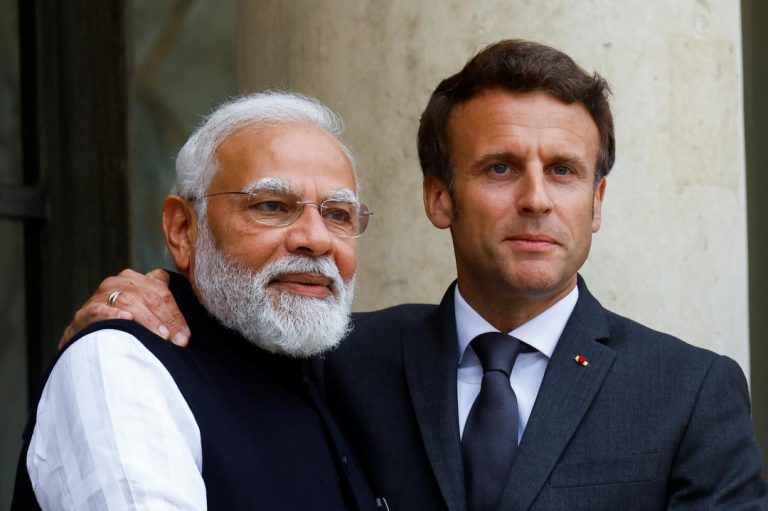
Hey NYT, fixed it for you: US committee after news portal calls J&K terrorists ‘militants’
In a recent development that has sparked controversy and outrage, the United States House Committee on Foreign Affairs shared a picture of a New York Times article that referred to terrorists behind an attack in Jammu and Kashmir’s Pahalgam as “militants”. The committee took to social media to express its discontent, stating that the attack was, in fact, a “TERRORIST ATTACK plain and simple”. This incident has raised questions about the credibility and neutrality of the New York Times in reporting terrorist attacks, particularly when it involves countries like India and Israel.
The New York Times article in question was published on November 15, 2022, and reported on a terrorist attack that took place in Pahalgam, a popular tourist destination in Jammu and Kashmir. According to the article, the attack was carried out by militants, who killed at least 10 people, including civilians and security personnel. The article did not explicitly mention the term “terrorist” to describe the attackers, instead opting for the term “militants”, which has led to widespread criticism.
The US House Committee on Foreign Affairs, a Republican-led committee, took to Twitter to express its discontent with the New York Times’ reporting. The committee shared a picture of the article with a caption that read: “Hey NYT, we fixed it for you… This was a TERRORIST ATTACK plain and simple… Whether it’s India or Israel, when it comes to TERRORISM, NYT is removed from reality.” The tweet quickly went viral, with many users expressing their support for the committee’s stance.
The committee’s criticism of the New York Times is not without merit. The term “militant” is often used to describe political or ideological groups that engage in armed conflict, but it can also be used to downplay the severity and nature of their actions. In the case of the Pahalgam attack, the use of the term “militants” instead of “terrorists” can be seen as a deliberate attempt to water down the severity of the attack and to avoid using language that is commonly used to describe similar attacks elsewhere in the world.
The New York Times’ decision to use the term “militants” instead of “terrorists” has been criticized by many as being biased and inconsistent. The newspaper has a reputation for being a respected and authoritative source of news, but its reporting on terrorism has been criticized in the past for being inconsistent and biased.
For example, in 2019, the New York Times published an article that referred to Hamas militants as “fighters” instead of “terrorists”. The article was widely criticized as being biased and inaccurate, and many saw it as an attempt to legitimize a terrorist organization.
The controversy surrounding the New York Times’ reporting on terrorism is not limited to its use of language. The newspaper has also been criticized for its lack of objectivity and balance in its reporting on terrorism. Many have accused the New York Times of having a liberal bias when it comes to reporting on terrorism, and of being more sympathetic to the causes of terrorist organizations than to the victims of terrorism.
The US House Committee on Foreign Affairs’ criticism of the New York Times is not the first time that the committee has spoken out against the newspaper’s reporting on terrorism. In 2020, the committee criticized the New York Times for its reporting on the Israeli-Palestinian conflict, which the committee said was biased and inaccurate.
The controversy surrounding the New York Times’ reporting on terrorism is not limited to its reporting on specific incidents or conflicts. It also raises broader questions about the role of the media in reporting on terrorism and the impact that biased reporting can have on public opinion and policy.
In conclusion, the US House Committee on Foreign Affairs’ criticism of the New York Times for referring to terrorists as “militants” is a valid one. The term “militant” is often used to describe political or ideological groups that engage in armed conflict, but it can also be used to downplay the severity and nature of their actions. The New York Times’ decision to use the term “militants” instead of “terrorists” can be seen as a deliberate attempt to water down the severity of the attack and to avoid using language that is commonly used to describe similar attacks elsewhere in the world.
The controversy surrounding the New York Times’ reporting on terrorism is not limited to its use of language. The newspaper has also been criticized for its lack of objectivity and balance in its reporting on terrorism, and for having a liberal bias when it comes to reporting on terrorism. The US House Committee on Foreign Affairs’ criticism of the New York Times is a reminder of the importance of accurate and unbiased reporting on terrorism, and the need for the media to take a more nuanced and balanced approach to reporting on this complex and controversial issue.
Source:




